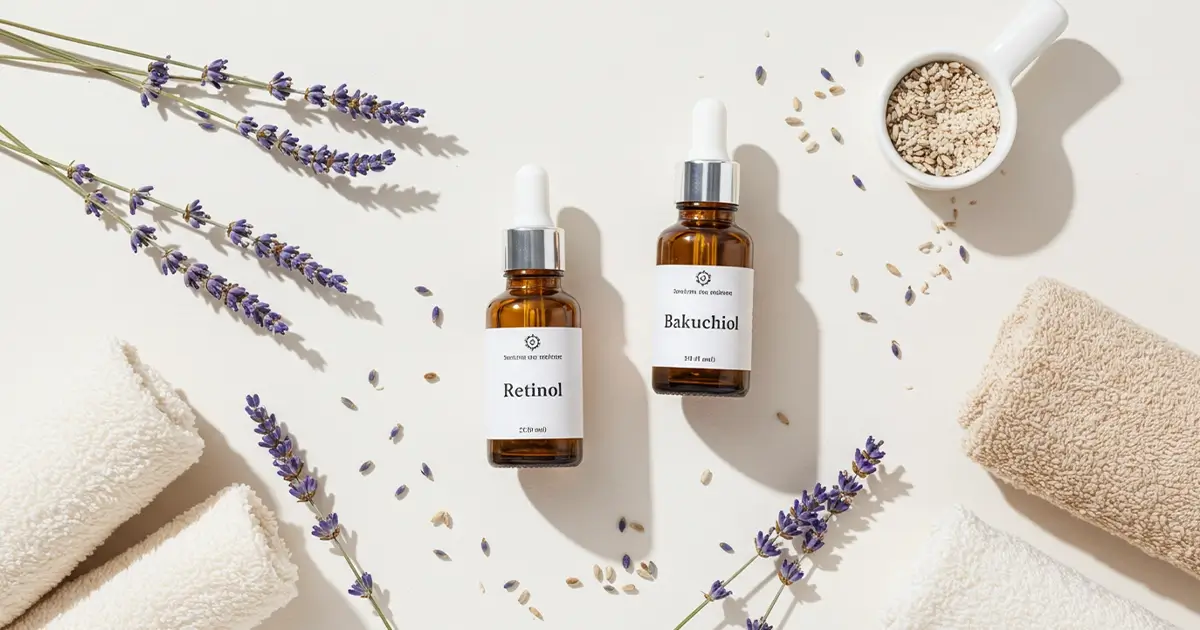Curious whether your face will prefer gentle bakuchiol or classic retinol? I break down the science, real-life tolerability, and routine tips so you can choose the smarter path to smooth, bright skin without endless peeling.
Why Retinol Became the Gold Standard (and Its Drawbacks)
Dermatologists have leaned on retinol since the 1970s because vitamin A derivatives speed up cell turnover, boost collagen, and fade stubborn pigment. Millions of studies later, the ingredient still headlines prescription creams, over-the-counter serums, and every "anti-aging" aisle you walk past. Results are proven, measurable, and - in most cases - worth the wait.
Improvement comes at a cost for many users. Retinol thins the stratum corneum at first, and that means flaky cheeks, red patches, or stinging around nostrils. If your skin barrier is already compromised, the initial weeks feel like the skincare version of leg day: good pain, but pain all the same.
Another hiccup is daytime sensitivity. Retinol breaks down under UV exposure and even visible light from screens, so most professionals restrict it to evenings. That limitation pushes night owls toward complicated, multi-step routines that clash with busy schedules.
How Retinoids Work in Skin Renewal
Retinol converts to retinaldehyde, then to retinoic acid, which binds to nuclear receptors inside keratinocytes and fibroblasts. Gene expression shifts toward thicker dermal collagen, smoother epidermis, and balanced melanin output. Translation: wrinkles, dark marks, and rough texture all look softer after months of steady use.
Meet Bakuchiol: Ancient Seed, Modern Hype
Bakuchiol is a meroterpene phenol extracted from the seeds of Psoralea corylifolia, a staple in traditional Ayurvedic and Chinese medicine. The compound entered Western cosmetic labs in the last decade, presenting itself as a vegan, photostable molecule that mimics retinol's gene-level performance - but with little irritation.
Unlike retinol, bakuchiol does not belong to the vitamin A family. Instead, its unique ring structure activates pathways that still up-regulate collagen and down-regulate MMP enzymes. Early testers noticed fewer side effects even at equivalent anti-aging concentrations, so product developers sprinted to bottle the trend.
Key Similarities and Differences
- Both increase collagen types I and III, plumping fine lines gradually.
- Retinol requires metabolic conversion in skin; bakuchiol works directly.
- Bakuchiol is photostable and plays well in morning routines; retinol prefers the dark.
- Pregnant or breastfeeding users often avoid retinoids altogether, making bakuchiol the mild alternative.
Is Bakuchiol Safe for Pregnancy?
Current human data remain limited, yet experts consider bakuchiol non-teratogenic because it lacks vitamin A activity. Many obstetric dermatologists allow it when retinoids are forbidden, but I still advise a quick chat with your physician - you know, just in case your little one decides to start a skincare blog in the womb.
Scientific Showdown: What Studies Say
In 2018 researchers ran a twelve-week, double-blind trial where 0.5 % bakuchiol and 0.5 % retinol creams were applied twice daily on opposite sides of volunteers' faces. Both arms saw similar wrinkle depth reduction, yet the bakuchiol side reported less tingling and less scaling. That diary data echoes countless anecdotal reviews flooding Reddit today.
Lab work backs up those happy faces. One 2022 laboratory study showed bakuchiol increased COL7A1 and fibronectin while calming pro-inflammatory mediators more efficiently than retinol. Gene expression practically mirrored vitamin A results but skipped the irritation pathway.
A 2024 peer review surveying twenty clinical papers reached a similar verdict: bakuchiol offers retinoid-like gains with superior tolerance for Fitzpatrick I–III sensitive profiles. The review did note that tretinoin, the prescription heavyweight, still edges out both in wrinkle reduction speed. Patience is the tax you pay for comfort.
Interestingly, bakuchiol shines in antioxidant testing - its radical-scavenging ability rivals well formulated green-tea catechins. That extra defense may explain the calmer post-application feel, especially on skin prone to visible redness.
Who Should Pick What? Skin Types, Goals, and Routines
If you have resilient, oil-rich skin and crave faster resurfacing, stick to retinol. You already endure strong actives without flinching. Pair it with ceramide creams, and give yourself six weeks before judging results. The flaky stage passes - I promise.
For reactive, eczema-prone, or rosacea-leaning faces, bakuchiol is the cooler cousin at the party. It slots into both morning and night routines, lets you wear SPF on top without balling up, and rarely forces that awkward "Why is your chin peeling?" conversation at brunch.
Patch Testing and Layering Tips
Introduce either ingredient three evenings a week for the first fortnight, then ramp up.
- Apply on clean, fully dry skin to avoid flash irritation.
- Follow with a mid-weight moisturizer rich in lipids, not just water.
- Wait seven minutes before slapping on your next serum. Yes, seven - I've timed it with a sitcom ad break.
- SPF 30+ every single morning. No excuses. Not even if clouds look like mashed potatoes.
Morning bakuchiol pairs beautifully with vitamin C serums and niacinamide, giving a bright, bouncy finish. Evening retinol meanwhile behaves best after hydrating toners and before peptide creams - read more in this deep-dive on retinol.
Routine timing matters too. If you prefer sunrise exercise, stash bakuchiol in your gym bag and re-apply sunscreen post-shower. Night-shift workers who sleep when birds chirp can still reap retinol benefits by applying it right before bed, blackout curtains optional.
Combining Bakuchiol and Retinol: Myth or Masterstroke?
A growing corner of formulating science suggests a low-dose combo delivers additive collagen perks without pushing irritation past the red line. Brands market "double-retin-ols," yet behind the flashy label sits a modest 0.1 % retinol plus 0.5 % bakuchiol blend - gentle, yet surprisingly effective after three months.
Use caution when layering separate products. Mixing drops on your palm creates unknown pH territory, and you risk destabilizing retinol. Instead, alternate nights or pick a single, well-tested cocktail serum. Your skin cells do not speak binary: they appreciate clear, unconfusing signals.
If you must experiment, buffer with a hyaluronic essence first, then pat on bakuchiol, wait ten minutes, and follow with a microencapsulated 0.3 % retinol. Monitor for redness, scale back if needed, and keep a humorous attitude. After all, nobody ever wrote a breakup song about bakuchiol.
Personal schedule also shapes compatibility. Busy parents sometimes run bakuchiol every weekday morning for firmness, reserving retinol weekends for an extra regenerative punch. Consistency, not heroic concentration, wins the biological marathon.
FAQ
Can I start bakuchiol in my mid-twenties or should I wait?
Start whenever you want preventive care without the adjustment drama retinol brings. Early use trains collagen to stay abundant and costs far less than late-stage resurfacing treatments.
How long until I see visible changes with bakuchiol?
Most trials detect smoother texture by week 6 and notable wrinkle softening around week 12. Keep taking selfies under the same bathroom light; you will spark joy scrolling back.
Does bakuchiol exfoliate like an AHA?
No, it modulates gene expression rather than dissolving corneocyte glue. Pair it with gentle lactic acid once or twice weekly if dullness still lingers.
Will bakuchiol stain clothing or pillowcases?
Pure bakuchiol is a pale viscous oil, so staining risk is minimal. Heavily pigmented herbal blends sometimes leave faint marks - test the fabric first if you own white silk pillows fit for royalty.
Is a prescription needed for bakuchiol?
Not at all. It is available in serums, creams, and even toners over the counter. Verify concentration - look for 0.5 % to 1 % on the label for meaningful efficacy.
Conclusion
Retinol remains the heavyweight champion for speedy, evidence-backed rejuvenation, yet bakuchiol offers a realistic alternative for sensitive skin that refuses to compromise comfort. Both improve collagen, pigmentation, and texture when used with patience and SPF discipline.
Share your experience below and let us know which path your complexion chose. See you in the next post - until then, take good care of your skin!


Comments (0)
No comments yet - be the first to share your thoughts!
Leave a Reply
Your email address will not be published. Required fields are marked *